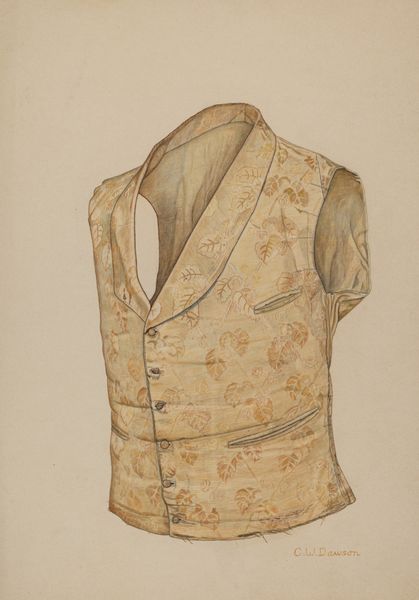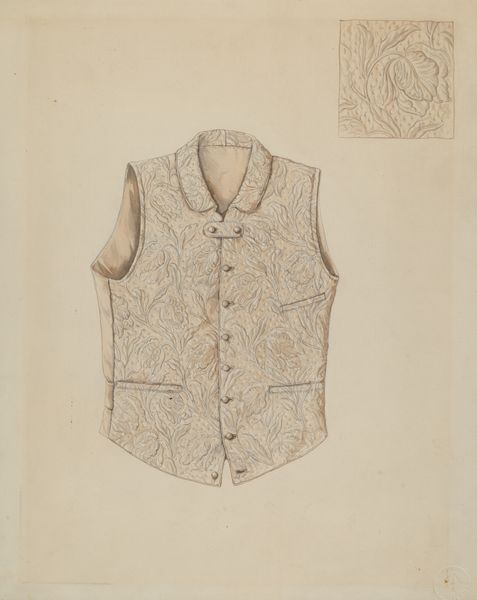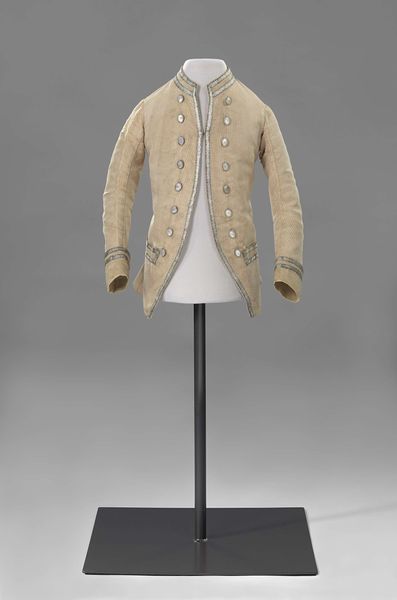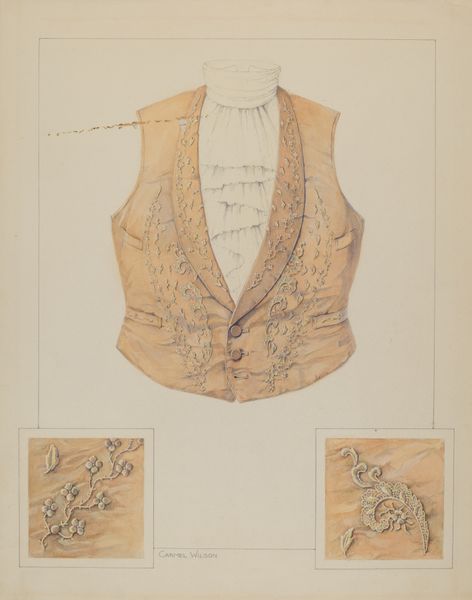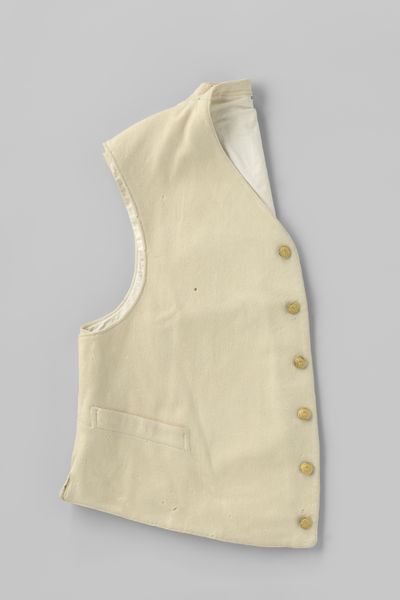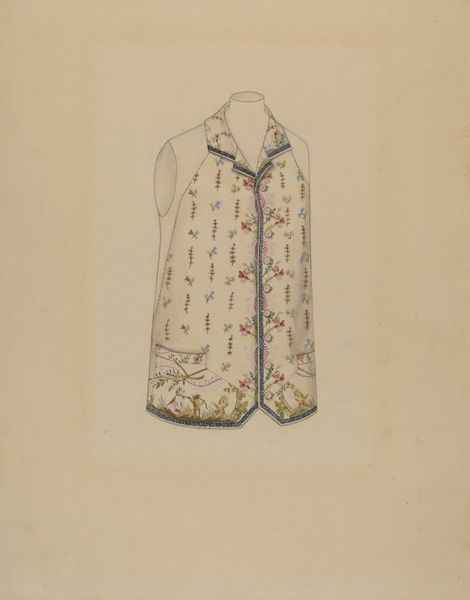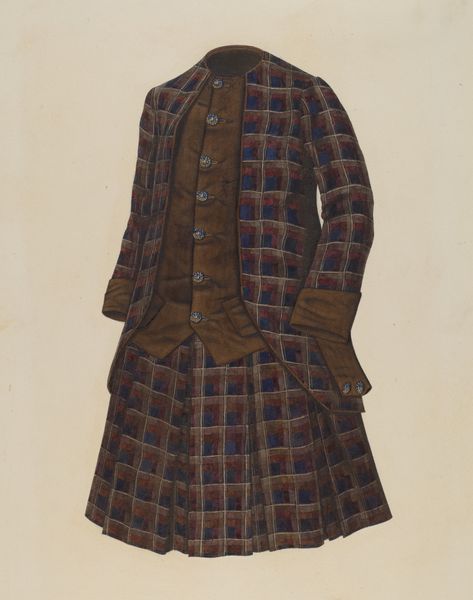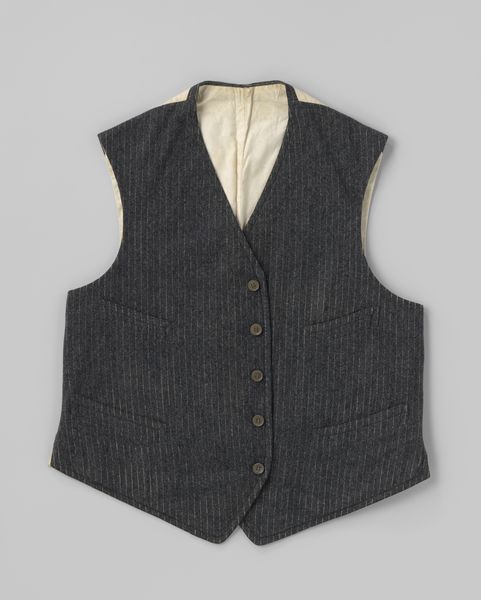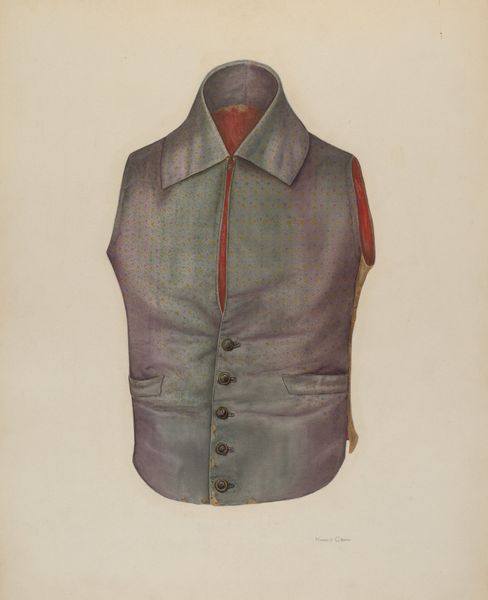
drawing, textile
#
drawing
#
textile
#
charcoal drawing
#
folk-art
#
decorative-art
#
watercolor
Dimensions: overall: 25.4 x 21.7 cm (10 x 8 9/16 in.)
Copyright: National Gallery of Art: CC0 1.0
Curator: Well, isn't this darling? The vest seems almost faded, or maybe just worn with care, which gives it a certain melancholy appeal. Editor: Absolutely. Let me introduce this object. What we have here is a quilt-work silk vest, dating back to approximately 1942. The piece comes from Clarence Secor, and is crafted from mixed media including textile and possibly both watercolor and charcoal drawing, Curator: Secor’s choice of silk is particularly interesting. During that time, material availability would have been dictated by the war effort. I wonder if the materials were recycled? We must remember that "making do" defined the era. Is that the story of the process here? The intimate stitching and quilt work on an otherwise refined material could imply that. Editor: It definitely speaks to the recycling of aesthetics and practices, doesn't it? The vest takes an elevated craft like quilt-work and incorporates it to the sphere of domestic artistry and practicality to create this very intimate object. It is fascinating that this everydayness is actually meticulously recreated with watercolor and charcoal to such effect! Curator: And it asks interesting questions: Was this intended to be worn? Who created it, and for whom? What kind of statements about labour were they trying to evoke? Because despite being ostensibly rendered with the materials of “high art,” the subject is rather common, isn't it? A decorative vest, the material foundation of everyday labour. Editor: It also raises interesting questions about value, doesn’t it? We typically celebrate oil painting on canvas or bronze sculpture, rather than appreciating the artistry that everyday crafts can embody. The vest is re-positioned within our line of sight thanks to Secor. That gives us insight to understand more folk pieces in relation to artistic hierarchies. Curator: That tension between use and aesthetic consideration really complicates how we are to value art today. Seeing it as just "craft" can be extremely limiting, but how do we place a domestic object within our understanding of art and society? It feels both intimately connected to one maker, yet deeply symbolic of so much more. Editor: Exactly. I am also curious about Secor's decisions on his artistic mediums in the selection. It also underscores the blending of artistic traditions within a specific historical framework, ultimately leading to reflection and awareness about society and the role of aesthetics within it. Curator: I couldn’t agree more! What an amazing snapshot of our society and time it offers.
Comments
No comments
Be the first to comment and join the conversation on the ultimate creative platform.
